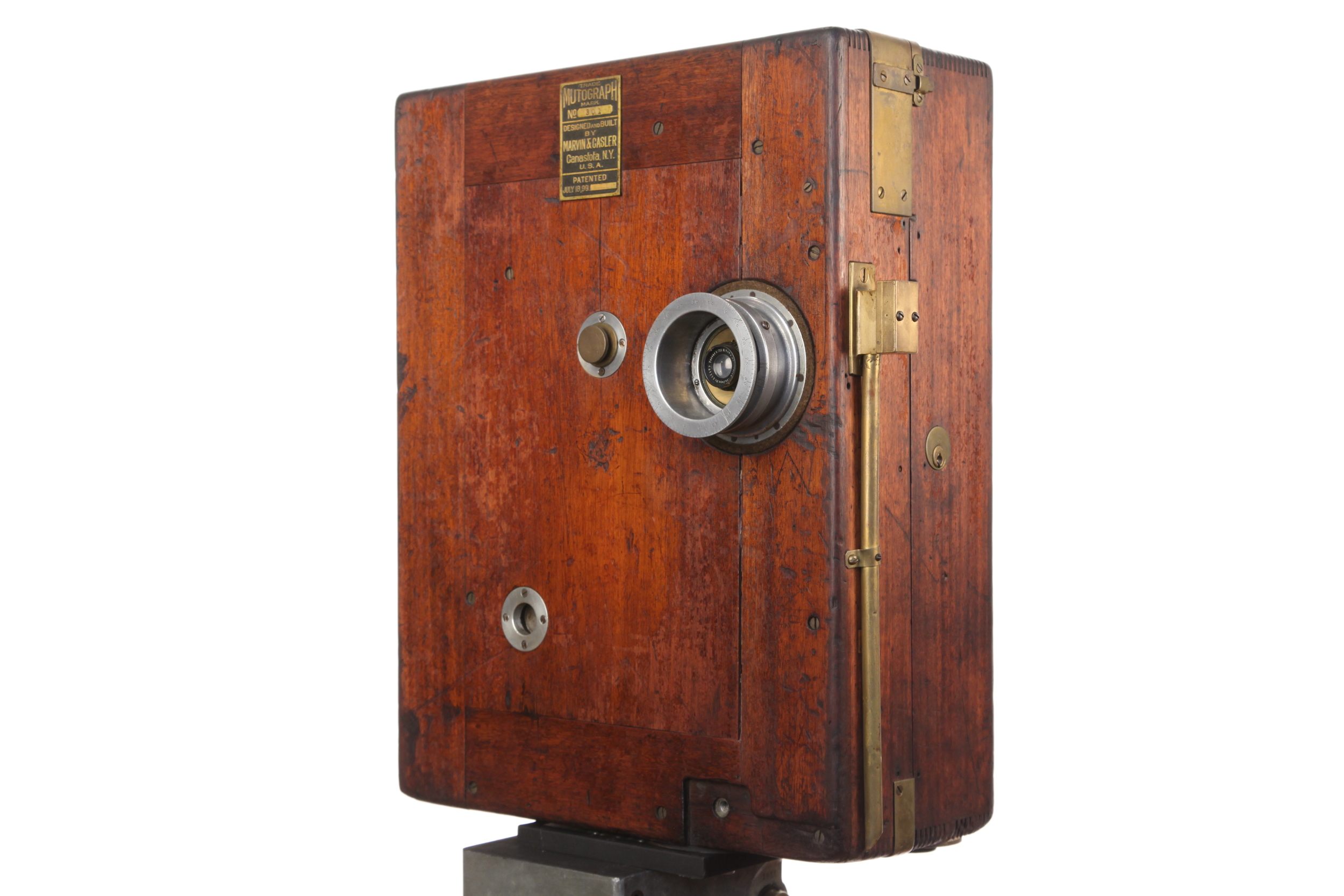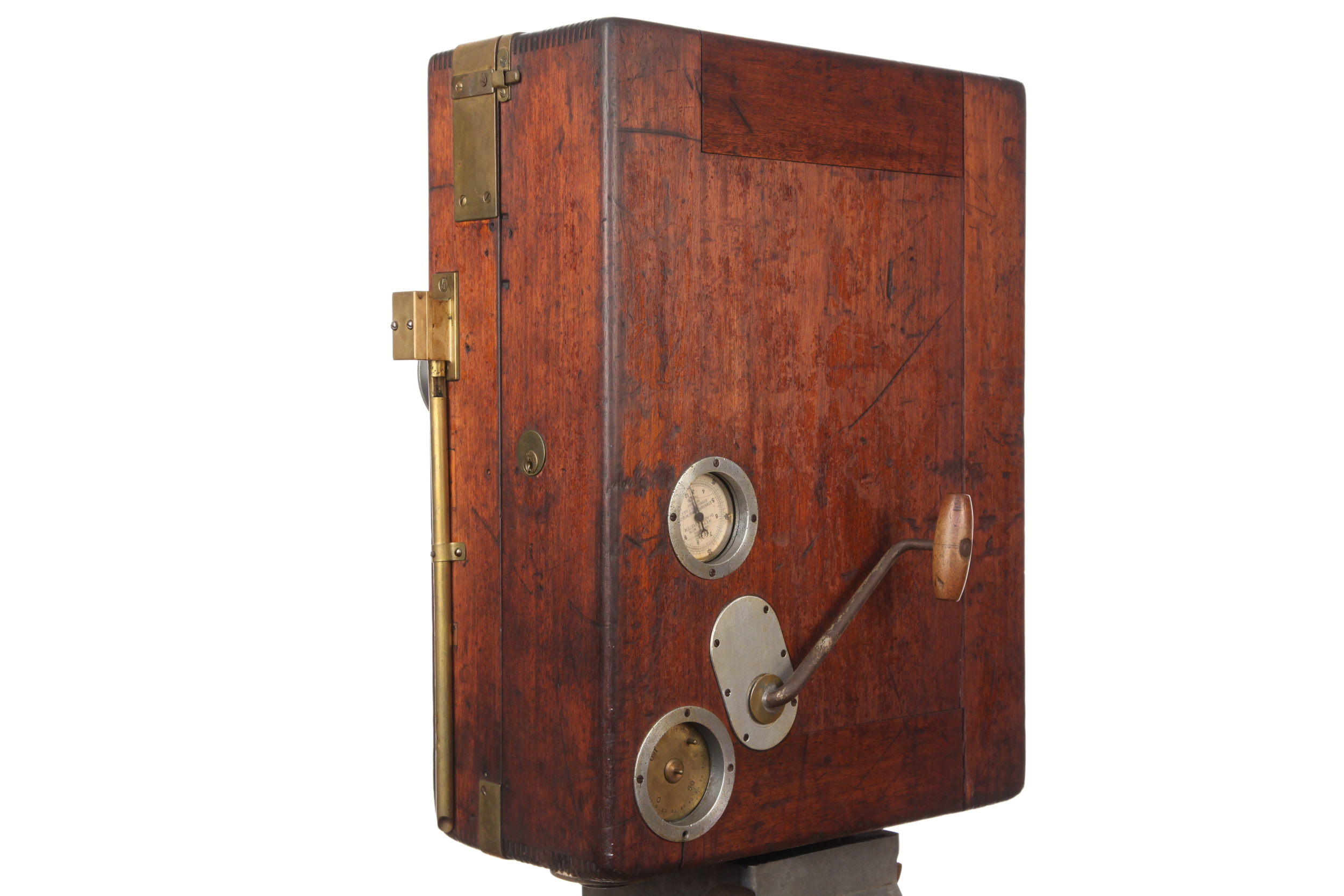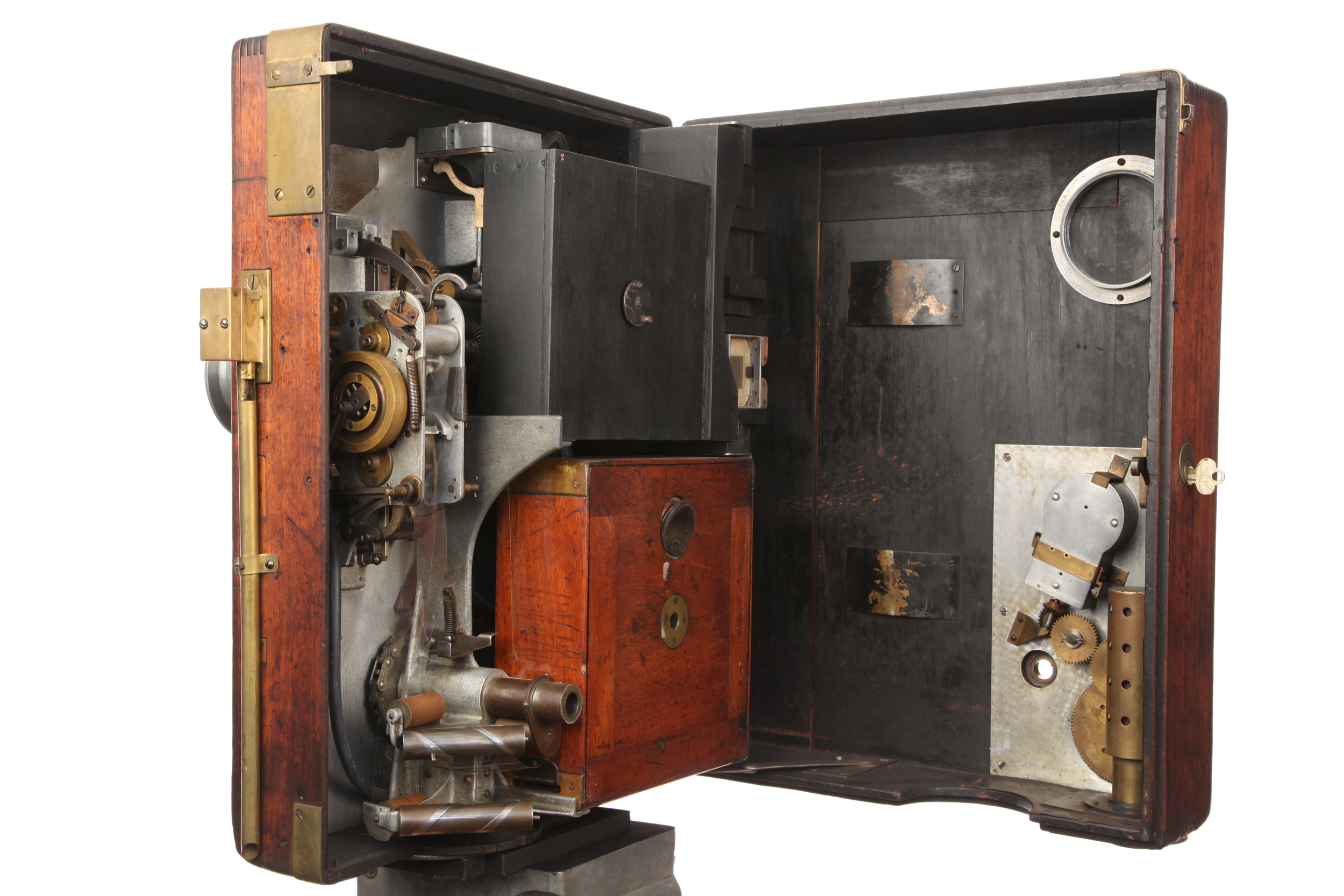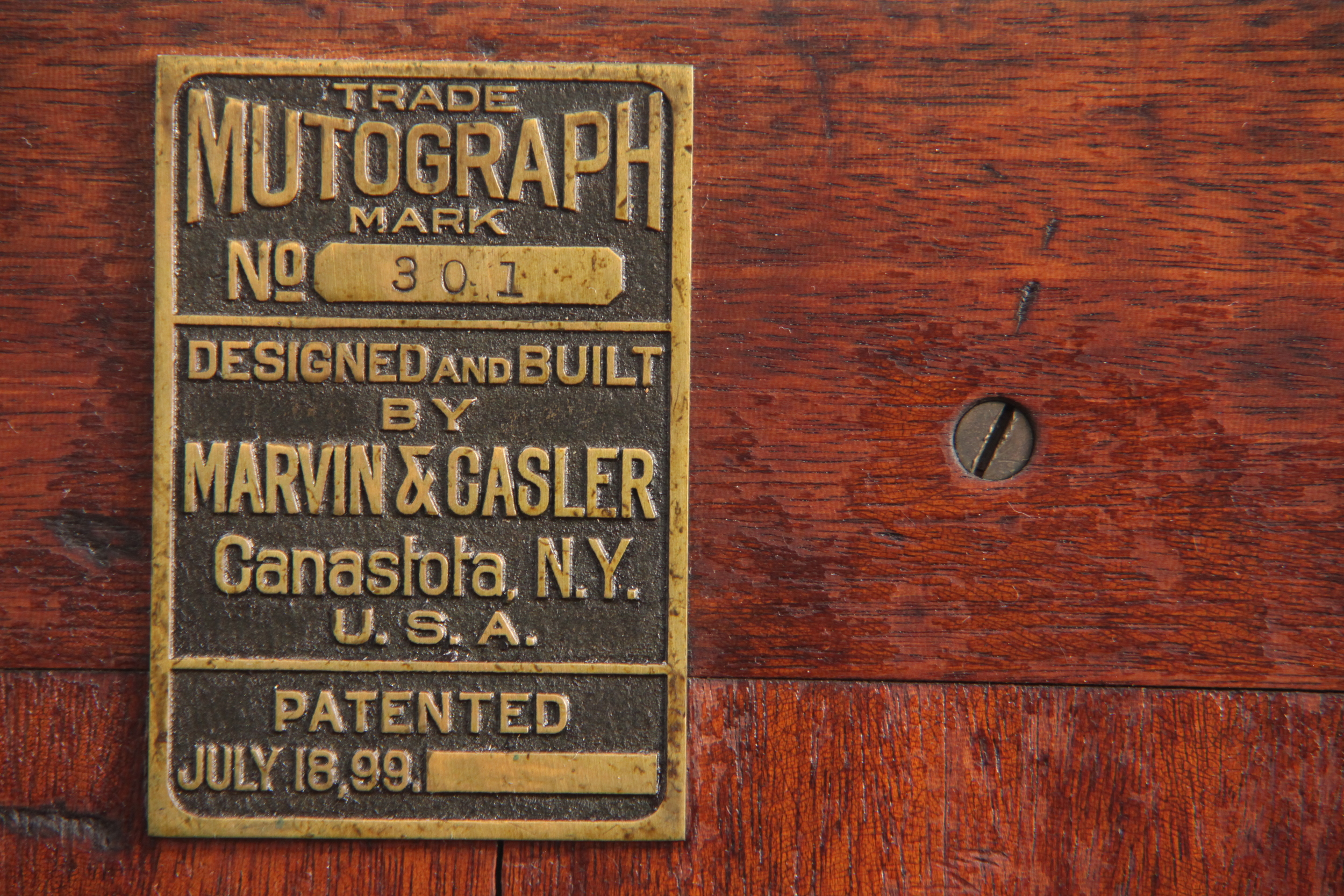1899 35MM Mutogaph






Designed and constructed by the American Mutoscope and Biograph Company to circumvent Edison Patents by perforation of the film stock during exposure in the camera.
The Biograph Company was founded in 1895 by William Dickson and Herman Casler when the Motion Picture Patents Company ( or “Trust” ) legally prevented filming motion pictures with equipment that infringed upon Thomas Edison’s patent. This restriction forced Dickson and Casler to develop the 68/70mm Mutograph camera in 1895 and the 35mm Mutograph in 1899. The genius of their inventions was that they circumvented the Edison patent by exposing unperforated film in the camera using a beater movement and punching one set of perforations for each frame at the time of exposure. The negatives were printed on an equally ingenious step printer having spring loaded pilot pins which sought out the random spaced negative perforations, printing it onto standard 35mm printing stock. The Edison patent specifically described a camera exposing regularly perforated film.
The American Mutoscope and Biograph company originally used the 68mm Mutograph camera to photograph motion pictures to be printed on flip cards used in their hand cranked Mutoscope viewing machine that competed with the Edison Kinetoscope machine. They became Edison’s chief rival in nickelodeon peep show market. In 1896 the company introduced the Biogaph projector which had superior image quality to the Edison’s Vitascope projector. The Biograph projected 68mm images versus Vitoscopes 35mm providing greater resolution. Film perforators at the time were notoriously undependable and since the Mutoscope camera perforated its own stock which was then printed on the Biograph printer with fixed registration pins the Biogaph images were steadier.
Disadvantages of the 68mm Mutograph was that it was extremely heavy and neither the 68mm nor the 35mm version could be run in reverse and double exposures could not be made. Hence there were very few trick effects in Biograph films.. The 35mm hand cranked Mutograph was more portable but still unweildly compared to other cameras exposing regularly perforated film stock.
The Biograph cameras captured some of the earliest recorded film images. The American Mutoscope and Biograph Company, ( in 1909 renamed “ The Biograph Company” ) was noted for its great entertainment value with films directed by D.W. Griffith and photographed by Billy Bitzer.
1899 35MM Mutogaph Serial No. 301
Camera is complete and operative.
